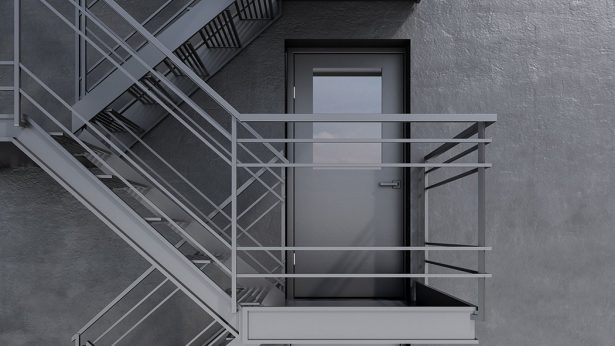TABLE OF CONTENTS
Nowadays, many people are choosing to expand and renovate their homes, rather than packing up their items and moving elsewhere. One of the most common ways to add extra living space to a home’s footprint is through a garage conversion – something that, according to Virgin Money, can add up to 20% to the value of your home.
Converting your garage has a number of different advantages, none bigger than the fact that’s it’s considerably cheaper than building an extension.
However, a garage conversion is not a project that can be completed by the casual DIY enthusiast. Instead, you’ll need professional help, as there are a number of vital tasks that must be performed under the supervision of an expert.
In this article, we’ll be taking you through the entire garage conversion process, from your first tentative designs, all the way through to turning the completed shell into something habitable. If you’ve been thinking about converting your garage into a living space, this is definitely the article for you!

The Design Process
Before you do anything, you’re going to need to carefully plan exactly what you want.
For the structural part of the planning process, you’ll need to contact a professional, such as a builder, who will be able to advise on everything from the ceiling to the floor, as well as everything in between.
This initial assessment by a builder will show you exactly how much work needs carrying out in order to make your garage a habitable space. If your garage is in a particular state of disrepair, it might even be cheaper to knock everything down and start again.
Once you’ve been told that your plan to convert your garage is feasible, you’ll need to plan how exactly the room is going to be used, and what you need to make it functional.
If it’s going to be an office, do you need a window in a particular place for more light? Will it need disabled access for a family member, meaning the transition from the neighbouring room needs to be flat or sloped? Is the room going to even be large enough to be a playroom for your energetic triplets?
Working with an Architect
For many, it might be prudent to hire a professional to work through the planning stage. An architect will be able to help through the entire design process and can be a particularly astute investment if you’re looking to do something particularly fancy or unusual with your new space.
Alternatively, there are companies such as Aksum with the ability to plan the whole process for you, often for a much lower fee than an architect will charge. Get in touch with us by phone or drop us a message.
Planning Permission
When it comes to garage conversions, especially those in spaces already adjoining a home, there’s not usually any need to apply for planning permission. This is because the majority of the work is internal. Therefore, the work will be classified as permitted development.
However, there are some exceptions to this, so it is always prudent to contact your local council and receive a Lawful Development Certificate, so you’re completely sure that what you’re planning on doing with your garage is lawful.
Building Regulations
While you won’t need to be concerned too much about planning permission, you will certainly need to pay attention to Building Regulations.
These are a set of regulations in place to protect people while they’re in and around a building, as well as to promote environmental solutions and sustainable development. If you fail to complete all work in compliance with Building Regulations, you could be forced to make expensive alterations.
Any builder you hire to complete your garage conversion should be fully knowledgeable in Building Regulations, as should any other contractor hired to work on your garage conversion. You can be sure that all tradesmen employed by Aksum understand Building Regulations and comply with them at all times.
Converting Your Garage: Key Steps
Now you’ve got through the design process and got all preparations in place, you’re ready to begin the work of converting your garage. There are a number of key areas to concentrate on, and we’ve described them all in detail below.
Foundations
First up, you must look at the foundations. This is because you’re going to need suitable support for the new wall you’ll be constructing to fill in the space that used to contain the garage door.
If there are no foundations currently in place, you’ll need to add them – their depth depends on the ground conditions but will almost certainly be somewhere between 750mm and 1,000mm.
Alternatively, you can use concrete or pre-stressed lintols, which should be cut into the brickwork with a minimum end bearing of 150mm. You should speak with your chosen building contractor when making this decision.
Walls
Next, you can move onto the walls. We’ll start with the wall to be constructed where the garage door used to be. This wall should be built to have a U(*) value of 0.28W/m2k or lower. This means that you’ll usually need to have 100mm of insulation, sandwiched between 100mm of blockwork on each side.
The U value of a building component like a wall, roof or window, measures the amount of energy (heat) lost through a square metre (m2) of that material for every degree (K) difference in temperature between the inside and the outside.
If you are converting a garage separate from your home, there’s also a high probability that the walls will need upgrading. However, attached and integral garages generally have sufficient walls.
When upgrading existing external walls, there should be a U value of at least 0.30W/m2k. Once again, your building contractor will know what is specifically needed for your garage conversion.
You also need to think about the party wall if the home is semi-detached and the garage is directly next to your neighbour. In this instance, you must provide sound insulation on the party wall.
Floors
Then there’s the floor, and the most common problem here is that it’s not level. If this is the case, the most common remedy is to use a self-levelling liquid screed, which is damp proofed with a membrane lapping into the DPC. The floor should also be insulated and, when finished, it should have a U value that’s not over 0.25W/m2k.
It’s also important to consider the difference in floor levels between the garage and the adjoining room. This is particularly important when the garage conversion will be used by someone with a physical disability. Ask your builder to suggest ways to make the floors equal in height.
Roof
If you are going to have a pitched roof, you must ensure the U value does not exceed 0.16W/m2k. This is usually possible by using around 300mm of quilt insulation, although this figure will vary slightly by manufacturer. The layers of insulation should be between the joists and at right angles over the joists.
If you are instead sticking with the original flat roof, you will still need to upgrade it. This is because the maximum permissible U value is 0.18W/m2k.
Windows and Doors
If you choose to install any windows in your garage conversion, they too must be compliant with Building Regulations. All windows should be doubled glazed and draught proofed to make sure their U value doesn’t exceed 1.6W/m2k. Alternatively, they should have a Window Energy Rating of Band C.
When it comes to any external doors, the maximum U value is 1.8W/m2k. All new windows and doors installed in a cavity wall should have an insulated damp proof course around the opening, in order to prevent cold bridging, which can lead to issues with condensation. All Building Regulations surrounding doors and windows will be known by the company you choose for installation.
It is also important to remember that any internal doors installed should have a 10mm gap below them to help with ventilation.
Ventilation
Ventilation is something you also need to remember, as ventilation openings should be found in every new room. Other than kitchens, bathrooms and utility rooms, which have no minimum, you must have a ventilation opening in a room that’s a minimum of 1/20th of the room’s floor area.
Also, background ventilation of 5,000mm2 is usually required in all rooms, except for bathrooms, kitchens and utility rooms, where the figure is 2,500mm2.
When it comes to kitchens, bathrooms and shower rooms, which are common components of garage conversions, mechanical ventilation ducted to passive stack ventilation or external air ventilation is required.
For kitchens, the figure is 60l/sec or 30l/sec if in a cooker hood, while the figure for shower rooms and bathrooms is 15l/sec. If you have a WC, the figure is 6l/sec, while it’s 30l/sec for utility rooms.
Fire Safety
Fire safety should, of course, be a priority in any home. If your garage conversion doesn’t directly lead to the hall going to the front door, you must have a window in place that is suitably sized to allow an escape.
The minimum size required by law is 0.33m2 and it must have a height or width of at least 450mm. What’s more, it must be 800-1,100mm above ground level.
Fire safety must also be thought about when it comes to doors. If there’s no external door in the conversion, there must be a fire detection system and alarm in place. This must meet BS 5839-6:2004 in order to meet Building Regulations.
Electrics
Finally, we come to electrics. Quite simply, all new electrics in the garage conversion must comply with Part P of Building Regulations. The installation of new electrics must be completed by a qualified professional.
It should also be remembered that any new light fittings must accept only energy-efficient bulbs, in order to make less of an environmental impact.
Interior Design
Once you have completed the conversion of your garage, you can start thinking about the more aesthetic aspects of the room. Flooring, wall colour, furniture – all will need to be decided upon before the space becomes a liveable one.
At Aksum, we can be there to add the finishing touches to any room. We can create bespoke furniture and fittings, created and installed by our expert joiners and carpenters, plus we can also add features such as wood wall panelling.
If you’ve got grand designs for your converted garage, we’re the people who could help make them a reality!
Overall Cost of a Garage Conversion
Converting a garage into a living space isn’t going to be a cheap project. Expect to pay an average of around £12,000, although larger garage conversions can cost upwards of £20,000.
Of course, the cost of your garage conversion will depend on various factors, including the size of the space, the quality of furnishings, the professional help you receive, and the type of room you are constructing.
As with all other major projects in your home, it is important to get a few quotes before deciding which company to use.
Don’t fall into the trap of automatically choosing the cheapest. Instead, analyse everything about the business, including previous experience, portfolio, and any recommendations they’ve received from your family and friends.



